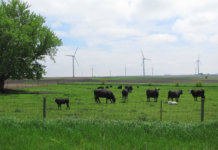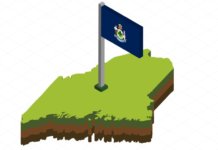In a move that outlines the parameters for offshore wind and how it will be developed, the Minerals Management Service (MMS), part of the Department of the Interior (DOI), on April 22 issued a framework that grants leases, easements and rights-of-way for the future development of offshore wind farms. The rule also establishes practices for sharing revenues from offshore renewable energy projects with coastal states.
‘President Obama's announcement today of the final rule governing offshore alternative energy is a welcome step forward on the road to strengthening both our environment and our economy with renewable energy,’ said American Wind Energy Association CEO Denise Bode in a statement.
In March, the DOI and the Federal Energy Regulatory Commission (FERC) resolved a longstanding regulatory dispute over which agency has the primary authority to site offshore wind farms. Under the agreement between FERC and the DOI, MMS is responsible for rules governing wind projects and FERC has authority over siting.
Critics expressed concern that an absence of offshore wind rules would allow speculators to seek permits for projects, therefore blocking access to areas sought by wind developers.
A 2006 report by the DOI concluded that wind energy in the U.S. Outer Continental Shelf (OCS) has the potential to generate 900,000 MW of power, which is roughly equal to the U.S.' total installed electrical capacity.
Provisions of the rule include the following:
– The MMS will coordinate and consult with federal agencies, the state's governor or an executive of local government affected by a renewable energy lease. The MMS encourages companies planning to pursue renewable energy activities on the OCS to conduct preliminary outreach, as early in the process as possible, by contacting appropriate state and local parties.
– Compliance with the National Environmental Policy Act, Coastal Zone Management Act and other relevant laws will be required throughout the life of an OCS renewable energy project – from lease issuance to site assessment, construction and operation to decommissioning of facilities.
– Commercial lease will require a site assessment plan (SAP) and a construction and operations plan (COP). Both the SAP and the COP will be required for commercial leases. The SAP describes the site-assessment phase in which a lessee may install a meteorological or marine data collection facility to assess renewable energy resources. The COP describes the construction and operations (generation of power) phase, as well as general plans for decommissioning facilities after termination of the lease.
– A General Activities Plan (GAP) will be required for technology testing and resource assessment activities on a limited lease. The GAP describes all site assessment and development activities. A GAP also is the type of plan required to describe activities on a renewable energy right-of-way or right-of-use and easement.
The measure also includes a revenue share mandated by the Energy Policy Act of 2005, which requires the federal government to share 27% of the revenues received with the states, provided the project area extends three nautical miles seaward of the state's submerged lands and has a coastline located within 15 miles of the geographic center of the project.
‘Offshore wind energy companies and states, among others, are anxious to embark on the still-complex leasing and permitting process,’ said Bode. ‘The rule clears the way so that offshore wind projects can begin to move ahead. At the same time, it will also help make even more achievable the president's goal of generating more of our electricity from renewable energy sources through a national renewable electricity standard – a policy that will both reduce pollution and create good jobs.’
For more information, visit federalregister.gov.



